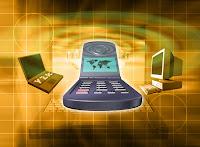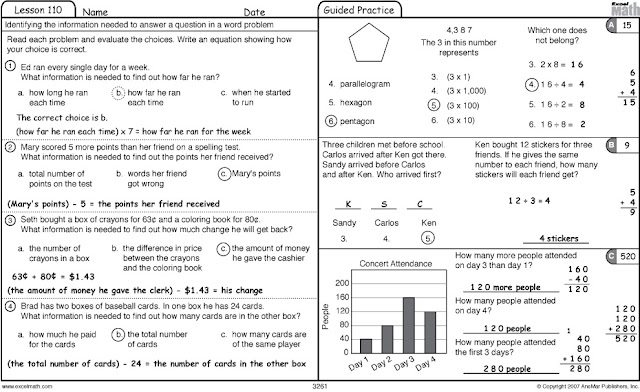 As technology takes up more and more of our students' time and attention, there may be a link between students who have trouble focusing (due to the distractions of electronic devices) and those who have difficulty studying and retaining information. Studies are showing that students who become distracted by technology are not as able to focus on their studies and are more apt to have lower grades.
As technology takes up more and more of our students' time and attention, there may be a link between students who have trouble focusing (due to the distractions of electronic devices) and those who have difficulty studying and retaining information. Studies are showing that students who become distracted by technology are not as able to focus on their studies and are more apt to have lower grades.A report released in November surveying Advanced Placement (AP) and National Writing Project (NWP) teachers, finds that 87% say the internet and digital search tools are creating an “easily distracted generation with short attention spans” and 64% say today’s digital technologies “do more to distract students than to help them academically.” Read more at pewinternet.org.
 As a result, some schools are having students take a "tech break." Teachers ask the class to place their electronic devices and tablets face down on their desks and move to a non-technology oriented task for 15 minutes (a tech break), then return to technology for 15 minutes, then take another tech break, gradually lengthening the time they are without technology. In this way, students learn to focus on the task at hand without continually checking facebook updates and instant messages or otherwise being distracted by technology.
As a result, some schools are having students take a "tech break." Teachers ask the class to place their electronic devices and tablets face down on their desks and move to a non-technology oriented task for 15 minutes (a tech break), then return to technology for 15 minutes, then take another tech break, gradually lengthening the time they are without technology. In this way, students learn to focus on the task at hand without continually checking facebook updates and instant messages or otherwise being distracted by technology. Excel Math offers teachers an easy-to-use way to give students a break from technology while they learn math skills that will help them compete in tomorrow's workforce. Excel Math is available in classroom sets of lesson sheets so each student gets one lesson sheet every day. The student sheet includes the lesson of the day plus Guided Practice and Homework (and may also include Basic Fact Practice, Stretches or brainteasers, complex word problems and regular assessments). There's no need for students to waste time copying problems out of textbooks. Here's an example of an Excel Math Lesson Sheet for Third Grade (the Homework portion is on the back). The answers are given in the Teacher Edition:
Excel Math offers teachers an easy-to-use way to give students a break from technology while they learn math skills that will help them compete in tomorrow's workforce. Excel Math is available in classroom sets of lesson sheets so each student gets one lesson sheet every day. The student sheet includes the lesson of the day plus Guided Practice and Homework (and may also include Basic Fact Practice, Stretches or brainteasers, complex word problems and regular assessments). There's no need for students to waste time copying problems out of textbooks. Here's an example of an Excel Math Lesson Sheet for Third Grade (the Homework portion is on the back). The answers are given in the Teacher Edition: |
| Third Grade Excel Math Student Lesson Sheet |
Excel Math Lesson Sheets are an easy way for students to transition from technology to paper and pencil. Just have the students place their tablets or electronic devices face down on their desks (after turning off the sound) so they are not distracted by flashing lights during the tech break. Then give each student a lesson sheet. After presenting a 10-15 minute lesson and having them complete the lesson portion of the sheet, use the Projectable Lesson on your whiteboard to reinforce the concept. For your next tech break, let your students complete the Guided Practice section of the Lesson Sheet. Brain research indicates that having students write down the answer to problems (rather than clicking a mouse or touching a screen) helps move that concept into their long-term memories.
According to a current research, "The most recent nationally representative surveys of the Pew Internet Project show how immersed teens and young adults are in the tech environment and how tied they are to the mobile and social sides of it. Some 95% of teens ages 12-17 are online, 76% use social networking sites, and 77% have cell phones. Moreover, 96% of those ages 18-29 are internet users, 84% use social networking sites, and 97% have cell phones. Well over half of those in that age cohort have smartphones and 23% own tablet computers like iPads." Read more from their report: Millenials Will Benefit and Suffer Due to Their Hyperconnected Lives.
Learn more about Excel Math and how these math lessons can benefit your students. Visit us at www.excelmath.com. Still have questions? Take a tour of Excel Math or leave a comment in the box below.
According to a current research, "The most recent nationally representative surveys of the Pew Internet Project show how immersed teens and young adults are in the tech environment and how tied they are to the mobile and social sides of it. Some 95% of teens ages 12-17 are online, 76% use social networking sites, and 77% have cell phones. Moreover, 96% of those ages 18-29 are internet users, 84% use social networking sites, and 97% have cell phones. Well over half of those in that age cohort have smartphones and 23% own tablet computers like iPads." Read more from their report: Millenials Will Benefit and Suffer Due to Their Hyperconnected Lives.
Learn more about Excel Math and how these math lessons can benefit your students. Visit us at www.excelmath.com. Still have questions? Take a tour of Excel Math or leave a comment in the box below.


No comments:
Post a Comment
Type your comment here